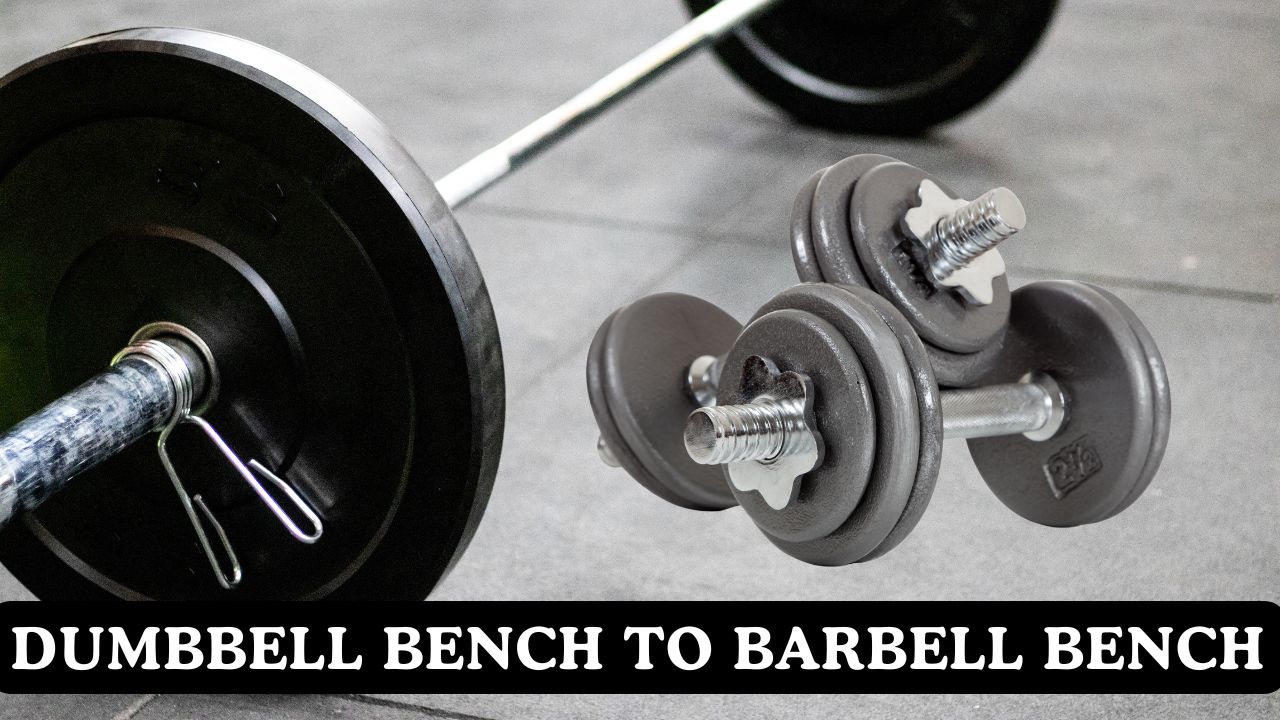Dumbbell to Barbell Bench Press Converter
Calculate precise bench press conversions between dumbbell and barbell exercises with scientific accuracy

Dumbbell vs Barbell Bench Press Conversion
Dumbbell to barbell bench press conversion is based on biomechanical research examining muscle activation patterns, stability requirements, and neuromuscular coordination differences between the two modalities. Competitive bench press research reveals significant differences in muscle recruitment, with barbell exercises allowing 45-80% higher loading capacity due to bilateral coordination advantages and reduced stabilization demands. Our calculator incorporates these scientific findings to provide accurate conversions for strength training progression.
Muscle Activation Patterns
EMG analysis demonstrates that grip width and bench angle dramatically affect muscle recruitment patterns between dumbbell and barbell exercises. Research shows that wider grips produce greater pectoralis major activation while narrow grips enhance triceps brachii activation by 25-30%. Combine this understanding with our chest exercise routines and tricep workouts for comprehensive muscle development during your training progression.
Neuromuscular Coordination Differences
Recent physiological research demonstrates that barbell bench press allows for higher loading capacity compared to dumbbell equivalents due to bilateral coordination advantages. This creates distinct training adaptations between the two modalities, making accurate conversion essential for maintaining progressive overload when transitioning between equipment types. Enhance your training with complementary shoulder exercises for complete upper body development.
Training Applications & Equipment Transitions
Accurate dumbbell to barbell conversions are essential for athletes transitioning between home and commercial gym environments, rehabilitation protocols, and periodized training programs. The calculator accounts for experience level, as advanced lifters demonstrate superior bilateral coordination and can handle loads closer to theoretical maximums. Integrate these conversions with comprehensive chest and tricep workouts for optimal training consistency.
Bench Press Conversion Ratios & Scientific Formulas
Bench Press Variation Analysis
| Bench Angle | Primary Target | Narrow Grip Ratio | Medium Grip Ratio | Wide Grip Ratio | Stability Factor |
|---|---|---|---|---|---|
| Flat Bench (0°) | Overall Chest Development | 1.45:1 | 1.65:1 | 1.75:1 | 82-88% |
| Incline Bench (30°) | Upper Chest (Clavicular) | 1.35:1 | 1.55:1 | 1.65:1 | 79-85% |
| Decline Bench (15°) | Lower Chest (Sternal) | 1.50:1 | 1.70:1 | 1.80:1 | 84-90% |
Stability Factor: Percentage representing stabilizer muscle activation efficiency. Lower percentages indicate higher stabilization demands for dumbbell exercises.
Experience Level Impact on Conversion Accuracy
| Experience Level | Training Duration | Conversion Multiplier | Key Characteristics | Training Focus |
|---|---|---|---|---|
| Novice | 0-6 months | 0.85x | Learning basic movement patterns | Form and technique mastery |
| Beginner | 6-18 months | 0.90x | Establishing neural pathways | Progressive overload introduction |
| Intermediate | 1.5-3 years | 0.95x | Consistent training adaptations | Specialized programming |
| Advanced | 3-5 years | 1.0x | Refined neuromuscular coordination | Competition preparation |
| Elite | 5+ years | 1.05x | Optimal motor control | Peak performance training |
Practical Training Applications
Competition Preparation & Powerlifting
Competitive bench press athletes use dumbbell training during accessory phases to address muscle imbalances and improve stabilizer strength. Converting between modalities allows for precise load management throughout competition preparation cycles while maintaining strength specificity. Combine with back exercises and arm workouts for comprehensive strength development.
Rehabilitation & Injury Prevention
Dumbbell bench press variations provide safer alternatives during shoulder rehabilitation due to unrestricted movement patterns and unilateral loading. Physical therapists use these conversions to maintain training intensity while accommodating injury limitations and movement restrictions. Support recovery with mobility exercises and proper movement patterns.
Periodization & Program Design
Strength coaches integrate both modalities throughout training cycles, using barbell bench for maximal strength phases and dumbbells for hypertrophy and stabilization blocks. Accurate conversions ensure consistent progressive overload across different training phases and equipment availability. Enhance periodization with leg exercises for complete body development.
Home vs Commercial Gym Training
Athletes frequently transition between home dumbbell setups and commercial gym barbell equipment. These conversions maintain training consistency regardless of equipment availability, ensuring continuous progress toward strength and physique goals. Supplement with bodyweight exercises when equipment is limited.
EMG Analysis & Muscle Activation Research
Our conversion calculator incorporates findings from extensive EMG research on bench press variations and muscle activation patterns:
Competitive Bench Press Research
“Analysis of Muscle Activation Patterns in Bench Press Variations”
PMC Research Study –
This comprehensive analysis reveals significant differences in muscle activation patterns between dumbbell and barbell exercises.
EMG analysis shows that grip width and bench angle dramatically affect muscle recruitment, with wider grips producing greater
pectoralis major activation while narrow grips enhance triceps brachii activation by 25-30%.
12 Bench Press Variations Analysis
“The Effect of 12 variations of the bench press exercise on EMG activity”
ResearchGate Study –
Comprehensive EMG analysis of 12 bench press variations shows how different angles and equipment types affect the three heads
of pectoralis major. Incline positions emphasize clavicular fibers while decline positions target sternal portions, with
dumbbells providing greater range of motion across all variations.
Neuromuscular Coordination Research
“Physiological Adaptations to Resistance Training”
Frontiers in Physiology –
Recent research demonstrates that barbell bench press allows for 45-80% higher loading capacity compared to dumbbell equivalents
due to bilateral coordination advantages and reduced stabilization demands. This creates distinct training adaptations between
the two modalities, validating our conversion methodology.
Implementation Tips & Best Practices
Progressive Conversion Implementation
Begin with 90-95% of calculated barbell weight for the first 2 weeks to assess individual response and ensure proper form adaptation. Gradually increase to full calculated weight while monitoring technique and safety. This approach allows neuromuscular adaptation and helps establish optimal loading patterns for sustained progress.
Grip Width Optimization
Experiment with different grip widths to find your optimal position for both strength and safety. Wide grip positions show the highest conversion ratios due to optimal pectoralis major leverage, but individual anthropometry affects optimal grip width. Monitor shoulder comfort and range of motion throughout the transition period.
Angle-Specific Considerations
Incline bench typically shows 18-21% load reduction versus flat bench due to decreased mechanical advantage and increased anterior deltoid involvement. Decline positions allow for highest loading capacity with enhanced lower chest activation. Adjust expectations and programming based on angle-specific conversion ratios.
Experience-Based Adjustments
Advanced lifters demonstrate superior bilateral coordination and can handle loads closer to theoretical maximums with proper form. Novice lifters should focus on movement pattern mastery before heavy loading and consider supervised training sessions for technique refinement during equipment transitions.
Safety Protocols & Range Guidelines
Always start with 5-10% less than calculated weight for safety assessment. Use the provided ±8% range to accommodate individual variations and daily performance fluctuations. Focus on proper bar path, scapular stability, and controlled eccentric phases during the transition period.
Complementary Exercise Integration
Enhance your bench press development with targeted accessory work. Incorporate back exercises for scapular stability, bicep exercises for arm balance, and core exercises for overall stability and strength transfer.
Research Limitations & Individual Considerations
While our conversion calculator is based on peer-reviewed research from competitive athletes, several individual factors may affect accuracy:
- Anthropometric Variations: Arm length, torso dimensions, and muscle insertion points significantly affect individual strength ratios between modalities.
- Training Specialization: Athletes with extensive experience in one modality may show different conversion ratios than those balanced in both.
- Stabilizer Muscle Development: Individuals with underdeveloped stabilizing muscles may show larger discrepancies in dumbbell performance.
- Shoulder Mobility: Range of motion limitations can affect dumbbell performance more than barbell exercises due to unrestricted movement patterns.
- Fatigue State: Stabilizer muscle fatigue affects dumbbell bench press performance disproportionately compared to barbell movements.
- Equipment Variations: Different dumbbell types (adjustable vs fixed, grip thickness) and barbell specifications can influence loading patterns.
- Neurological Adaptations: Individual differences in motor learning and bilateral coordination affect conversion accuracy over time.
Professional Guidance: These conversions provide scientifically-based starting points for equipment transitions. Consult qualified strength coaches for personalized program adjustments based on individual response, training goals, and biomechanical considerations. Always prioritize proper form and safety over adherence to calculated loads.
Related
- Barbell Racking Calculator
- Push-Up Weight Calculator
- Wilks Calculator
- DOTS Calculator
- One-Rep (1RM) Max Calculator
- One-Rep Max (1RM) Bench Press Calculator
References
- Saeterbakken AH, Mo DA, Scott S, Andersen V. The Effects of Bench Press Variations in Competitive Athletes on Muscle Activity and Performance. J Hum Kinet. 2017 Jun 22;57:61-71. doi: 10.1515/hukin-2017-0047. PMID: 28713459; PMCID: PMC5504579.
- Noteboom, L., Belli, I., Hoozemans, M. J., Seth, A., Veeger, H. E., & T., F. C. (2024). Effects of bench press technique variations on musculoskeletal shoulder loads and potential injury risk. Frontiers in Physiology, 15, 1393235. https://doi.org/10.3389/fphys.2024.1393235
- Roy, Xavier & Arseneault, Keven & Sercia, Pierre. (2021). The Effect of 12 variations of the bench press exercise on the EMG activity of three heads of the pectoralis major. IUSCA Journal. 1. 1-11. 10.47206/iuscaj.v1i1.39.
- Wang, Y., Lü, J., Rong, J., Song, L., Wang, W., Jiang, Y., Liu, Y., & Huang, L. (2020). Acute Effects of Two Types of Dumbbell Exercise on Oxygenated Hemodynamic Concentration of Cerebral Activation in Healthy Young Male Adults: A Functional Near-Infrared Spectroscopy Study. Frontiers in Human Neuroscience, 14, 519171.

Manish is a NASM-certified fitness and nutrition coach with over 10 years of experience in weight lifting and fat loss fitness coaching. He specializes in gym-based training and has a lot of knowledge about exercise, lifting technique, biomechanics, and more.
Through “Fit Life Regime,” he generously shares the insights he’s gained over a decade in the field. His goal is to equip others with the knowledge to start their own fitness journey.
